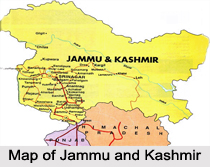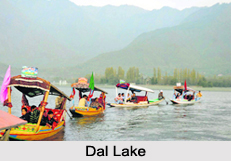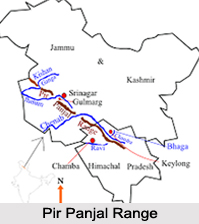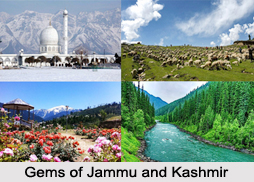 Jammu and Kashmir is an Indian state on extreme north of the country and adorned with the Himalayan Mountain Range. It has three divisions: Jammu, Kashmir Valley and Ladakh. Jammu and Kashmir has two capitals, Srinagar being the summer capital and Jammu as its winter capital. In recent years Jammu and Kashmir has been the subject of international focus. Unfortunately, misunderstanding of the State`s history and its present situation has largely flawed discussion on the issue.
Jammu and Kashmir is an Indian state on extreme north of the country and adorned with the Himalayan Mountain Range. It has three divisions: Jammu, Kashmir Valley and Ladakh. Jammu and Kashmir has two capitals, Srinagar being the summer capital and Jammu as its winter capital. In recent years Jammu and Kashmir has been the subject of international focus. Unfortunately, misunderstanding of the State`s history and its present situation has largely flawed discussion on the issue.
History of Jammu and Kashmir
Jammu and Kashmir has the vast history from the ancient times to the modern era. The Nilamata Purana describes the Valley`s origin from the waters, a fact corroborated by prominent geologists. The name of the land was derived from the process of desiccation. Ka means "water" and Shimir means "to desiccate". Hence, Kashmir stands for "a land desiccated from water". Jammu and Kashmir came into being as a single political and geographical entity following the Treaty of Amritsar between the British Government in India and Gulab Singh, signed on March 16, 1846. The Treaty handed over the control of the Kashmir State to the Dogra ruler of Jammu, who had earlier annexed Ladakh. Thus, a new State comprising three distinct religions of Jammu, Kashmir and Ladakh was formed with Maharaja Gulab Singh as its founder and ruler. Jammu and Kashmir was one of about 565 Princely States of India on which the British domination lapsed at the stroke of midnight on August 15, 1947. While the power was transferred to the people in British India, the rulers of the princely states were given an option to join either of the two Dominions- India or Pakistan.
Geography of Jammu and Kashmir
Strategically located Jammu and Kashmir State constitutes the northern most extremity of India. The state is bordered with Himachal Pradesh to the south, Azad Kashmir to north and west, Pakistan to the southwest and People`s Republic of China to the northeast and east. Situated between 32.17 degree and 36.58 degree north latitude and 37.26 degree and 80.30 degree east longitude, the total area of the State is 22,22,236 sq km including 78114 sq km under the illegal occupation of Pakistan and 42,685 sq km under that of China, of which Pakistan illegally handed over 5130 sq km to China. The State is bounded by Pakistan, Afghanistan and China from the West to the East. The State ranks 6th in area and 17th in population among the States and Union Territories of India. The State consists of 14 districts, 59 Tehsils, 119 blocks, 3 Municipalities, 54 Towns and notified area Committee, 6477 inhabited villages and 281 uninhabited villages.
Demography of Jammu and Kashmir
Jammu and Kashmir is the only state in India that has a Muslim majority population. Though Islam is practiced by over 70% of the population of the state and by 95% of the population of the Kashmir valley, the state has large and vibrant communities of Buddhists, Hindus and Sikhs. In Jammu, Hindus constitute 66% of the population and Muslims approximately 30%; In Ladakh District, Buddhists constitute a little over 50% of the population, the remaining being Muslims. The people of Ladakh are of Indo-Tibetan origin, while the southern area of Jammu includes many communities tracing their ancestry to the nearby Indian states of Haryana and Punjab, as well as the city of New Delhi.
Education in Jammu and Kashmir
Until 1970, Jammu and Kashmir has its own Boards and University that provide the opportunities to the residents. The education is divided into primary, middle, high secondary, college and University level. The state follows 10+2 pattern for education of children. The technical college level education is carried out by various colleges such as Government College of Engineering and Technology, NIT Srinagar, Government Medical College Jammu. The general education is provided by general colleges spread across various districts. University level education is provided by University of Jammu and University of Kashmir.
Culture of Jammu and Kashmir
Jammu and Kashmir has a very unique and distinct culture that has evolved and influenced by the various religions that exist in the state. In Kashmir, Dumhal is a popular dance form that is performed by the male members of the Wattal region. Women also practice a number of dance forms like Rouff. Moreover, handicrafts and fine arts are also well developed in the state. The house boats or Shikaras are a unique feature of this region that a sail through the beautiful lakes in the valley. The Dogra culture of Jammu has several similarities with that of the Punjab. Punjabi occasions like Baisakhi and Lohri are celebrated by the people with great enthusiasm. Some of the popular performing traditions of Jammu and Kashmir are Kud, Heren, Fumenie and Jagarana, Bakh, Karak, Benthe, Bhand Pather, Chakri, Sofiana Music, Marriage songs and dance , Jabro , Alley Yate, etc. Some of the major festivals of Jammu and Kashmir are Gurez Festival, Khir Bhawani Festival, Baisakhi Festival, Tulip Festival, Saffron Festival and Amarnathji Yatra.
 Economy of Jammu and Kashmir
Economy of Jammu and Kashmir
Jammu and Kashmir`s economy depends mainly on tourism, farming and animal husbandry.
Tourism in Jammu and Kashmir
Jammu and Kashmir used to be a paradise for Indian tourists. Some of the most popular tourist locations in the state are- Kashmir valley, Jammu valley, Patnitop, Leh, Kargil, Zanskar, Dal Lake, Shalimar Garden, Nubra Valley, Sruinsar Lake, Chashma Shahi Garden, Mansar Lake, Amar Mahal, Katra, Mantalai, Sanasar, Batote and many other gorgeous places.
Related Articles
Culture of Jammu and Kashmir
Costumes of Jammu and Kashmir
Kashmir
Sonamarg
Architecture Of Jammu And Kashmir
Tribes of Kashmir






